


* I received my copy of the game from the developer for free. * ‘Rainswept’ is a highly interactive visual novel developed by the one-person studio Frostwood Interactive. I call it a visual novel because it’s not built around solving puzzles. There was only one instance in my 5 hours of playing that I was actually solving one. The game is highly interactive because instead of simply clicking through the story like in a VN, you do need to move your character, and interact with different people and objects. The focus of ‘Rainswept’ is telling a strong story. It starts off slow, but becomes more engaging as you unravel the mystery of two victims’ deaths in a small town. The dialogues between characters feel real, and the story deals with serious issues like relationship, abuse, loneliness and suicide with maturity. You can tell the developer has put a lot of thought into crafting a story that treats all these matter with care. It’s a bit disappointing then that ‘Rainswept’ feels incongruent overall. The art, while eye-catching, does not seem to fit the sombre mood and tone of the story. Similarly, the ways with which the characters move can be unfittingly comical. The private, tranquil moments of the game work really well though, especially those featuring skies of stars or fireworks. Those were my favourite. In fact, the detective story of ‘Rainswept’ seems to serve more as a vehicle to the more poignant, at times relatable story of the victims. Much of the detective work -- mostly travelling from A to B to C -- feels like busy work. I’d love to play a game that simply focuses on the tumultuous relationship between the victims. But considering ‘Rainswept’ was mainly developed a single person, it’s quite an accomplished piece of work. While the art, interface/user input design, and coding could use a bit more polish, the story is engaging and well-written enough that I want to recommend ‘Rainswept’ to players who enjoy good narratives in games.
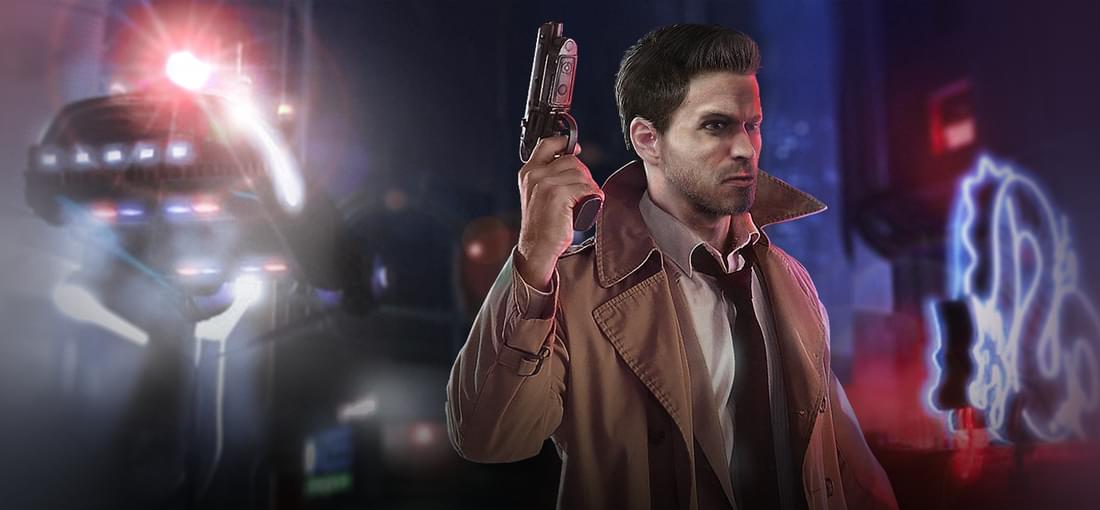
‘Blade Runner’ the game was designed for fans of the ‘Blade Runner’ movie directed by Ridley Scott. While you don’t need to have watched the film and its various cuts to appreciate the game, it would certainly help. For the most part, the game’s narrative structure was lifted from that of the film, even down to the way it introduced blade runners and replicants. The story was set in parallel with that of the movie, featuring many of the now iconic locations, such as Bradbury Building (J.F. Sebastian’s home), Hannibal Chew’s lab, and Tyrell Building. It’s a plus that the game expanded upon these locations, allowing you explore the world of ‘BR’ in greater detail. Because you don’t get to play as Deckard, the protagonist of the film, having some of the film’s cast voice their characters in the game helped to enhance the immersion. In fact, you’ll get to interact with a few of them as Deckard did. You can also administer the Voight-Kampff Test as a blade runner. While these parallels and similarities helped to create an authentic ‘BR’ experience, it also made the game almost too familiar. It felt like a waste that the developers didn’t stray farther from the source material. What makes ‘BR’ the game interesting was that your actions (i.e. being a true blade runner vs. a replicant sympathizer) have an impact on how the overall narrative unfolds. The game also randomizes whether or not some characters are replicants, affecting how certain scenes play out. Given that, you can potentially unlock one of several different endings each time you start a new game. ‘BR’ is a solid adventure game from the heyday of the genre. The original graphics still look great, albeit slightly pixelly on modern monitors. Voice acting was also well done, though I do take issue with the almost-too-cheery line delivery of your character. Despite a couple of shortcomings, I think it’s really worth your time to check ‘BR’ out, especially when it has been resurrected to run on modern PCs.
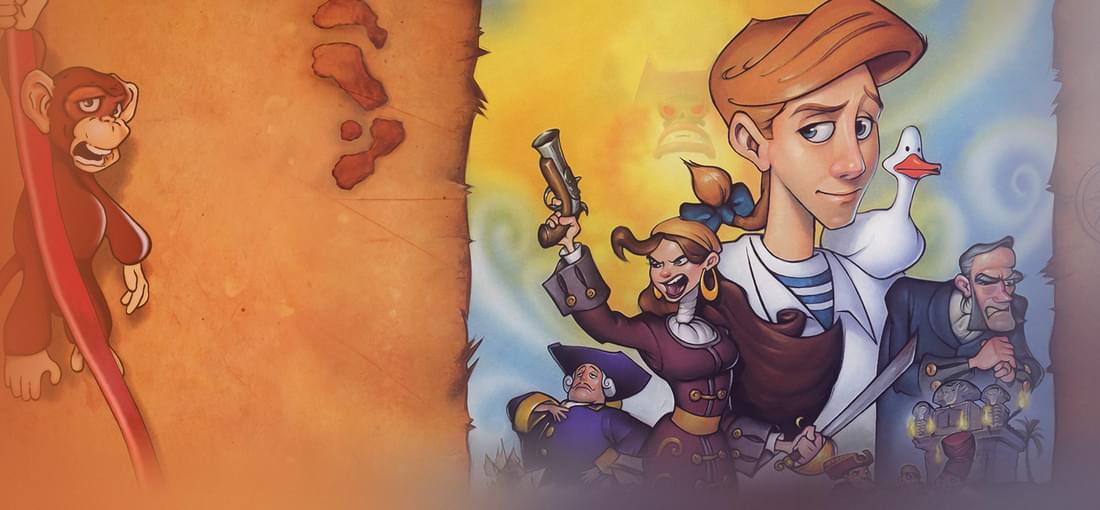
Adventure games of late 1990s and early 2000s suffered greatly with the arrival of 3D animation. Very few adventure games, even those with solid track records in the 2D years, transitioned well to 3D. ‘Escape from Monkey Island’ was such game. Because of that, it also did not stand the test of time as well as its predecessors. To be fair, ‘EfMI’ is not a bad game. It’s actually an overall enjoyable adventure game that competently carried the torch of previous ‘Monkey Island’ titles. It’s funny, has solid voice acting, and is colourful. Yet, because it followed the very well-made and beautiful ‘The Curse of Monkey Island’, it had really big shoes to fill. The fact that ‘EfMI’ was a 3D adventure game really did not help. The 3D graphics just couldn’t compare to the art in ‘CotMI’. It might have helped if it were a point-and-click adventure game, but you use the keyboard to control all actions in ‘EfMI’. Positioning Guybrush properly for interaction with people or objects could be tricky, which was frustrating in a couple of timed puzzles. Plus, there were often jarring changes to camera angles when transitioning between scenes. If you happened to be holding down the direction key, you just might end up going back to the scene from which you came. The greatest annoyance of ‘EfMI’ is its variation of Insult Sword Fighting, called Monkey Kombat. Honestly, I found it fun the first time. But, the process of learning all the stances, key combinations to trigger them, and hierarchy of the stances was tiresome, especially in subsequent playthroughs. Monkey Kombat was just too complicated for its own good, and it lacked the wit of Insult Sword Fighting. It’s hard to look back at ‘EfMI’ very fondly when other ‘MI’ titles were much better made in comparison. Despite that, it’s still a fun, humourous ‘MI’ game with good puzzles. It’s just slightly disappointing that all its strengths were overshadowed by its poor execution in a few areas, especially for a LucasArts title.
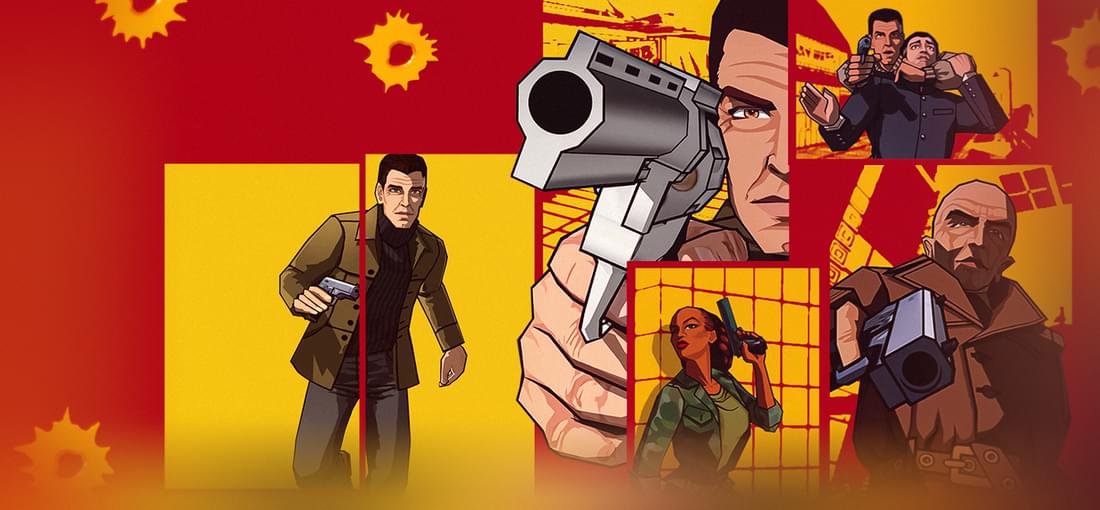
When ‘XIII’ first came out back in 2003, it stood out among its FPS contemporaries with its cel-shaded graphics. Its graphic-novel-like presentation was also unique for the genre at the time, too -- using comic panels to show close-ups of actions or concurrent events, and comic-book-style text of varying sizes to show proximity of enemies. Yet back in those days, I spent so much time playing games like ‘Knights of Old Republic' and ‘Call of Duty’ that ‘XIII’ was soon off my radar. So with ‘XIII’ available on GOG, I finally tried it. While its graphics still look great in 2020, I find it just shy of being mediocre when comparing it to FPSs of early 2000s. My biggest gripe with ‘XIII’ is its save feature. Although I am allowed to save the game anywhere and at any time, saved games load from checkpoints. Why didn’t the developer implement a proper save-anywhere feature when many other PC FPSs did? Still, the great looking cel-shaded presentation has its drawbacks. Because characters look like cardboard cutouts, striking enemies -- whether with bullets, fists, or objects -- never felt convincing and satisfying. Consequently, I never felt the game’s action to be intense or thrilling. It also didn’t help that the narrative payoff at the end of each mission wasn’t enticing enough to convince me to keep playing. I couldn’t finish ‘XIII’ because my save file got corrupted mid-game. I would be inclined to restart the game if it wasn’t for the controls. One fun possibility of ‘XIII’ is taking a hostage or using an enemy as human shield. Yet, movement with a hostage, while trying to complete other actions like opening a door, is clunky. I really want to like ‘XIII’, but despite its presentation, I can see why the game never took off. Compared to its contemporaries of the same genre, it just wasn’t very polished. Unless you’re truly curious about ‘XIII’, I would recommend for you to pass on it.
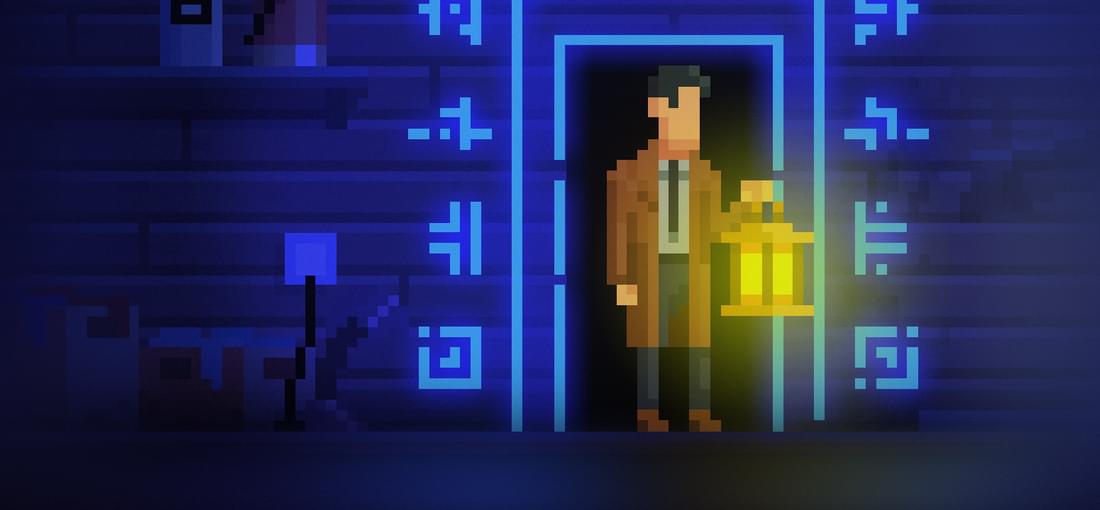
How much you’ll enjoy ‘The Darkside Detective’ will depend on your preferences in humour. ‘TDD’ is full of puns, self-referential laughs, and middlebrow jokes that more likely amuse than offend. The game doesn’t take itself seriously, and is generally silly despite the earnestness with which our main protagonist, Detective McQueen, investigates the paranormal activities in his city. I find ‘TDD’ delightful. It’s an undemanding adventure game doesn’t have any dead ends, and with puzzles that merely tickle your brain. Because of that, I find it to be a really good palate cleanser of a game to play between bigger, longer, and more challenging (e.g. AAA) titles. I managed to complete the game’s 6 main episodes and 3 bonus cases in about 4 to 5 hours. The friendly banter between Detective McQueen and his sidekick Officer Dooley, and their good natured intent to solve cases (or actually in Dooley’s case, not to do any work) make ‘TDD’ very charming and palatable. This traditional point-and-click adventure game will appeal to many gamers, especially those who appreciate dad jokes. It’s well-made enough that it that got me looking forward to its upcoming sequel.

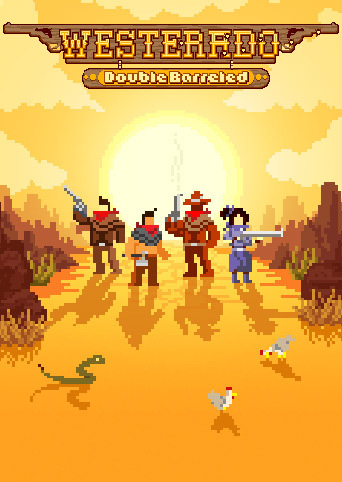
Once upon a time in the west, you inherited your dying brother’s pistol to avenge the death of your family. Showing your true grit, you rode lonesome to Clintville, arrived before high noon, and started your search for the murderer. This is the tale of ‘Westerado: Double Barreled’. ‘Westerado’ is set in a small open-world with plenty of gunfights. You interrogate the good, the bad and the ugly to find out who killed your family. Clues about the murderer’s identity are earned when you complete side quests or do favours for NPCs. With the murderer’s identity being randomly generated in each new game, gathering clues are essential. Even in the Wild West, it is worthwhile to play nice sometimes. Of course, you can simply choose to complete side quests for a fistful of dollars, and just randomly accuse locals as the murderer. While the latter may be funny, it has its consequences. Wrongly accusing NPCs can quickly make you the unforgiven, and indignant NPCs will stop helping you for the rest of the game. This can possibly make your game slightly more challenging. Given that, ‘Westerado’ has surprisingly deep gameplay in spite of its simple presentation of 8-/16-bit style pixel graphics. Your actions have lasting consequences. Annoying or killing certain NPCs can eliminate chances of earning clues, or lock out some side quests. Irritating locals enough will result in them antagonizing you for the rest of the game. Despite the size of its world, there are plenty of secrets to reveal, and nooks and crannies to explore. ‘Westerado’ is a very enjoyable game. In spite of its western themes, it keeps its tone light and mostly cheery. Gunfights are fast and at times challenging, in part because the aiming is annoyingly slightly off. It’s a shame because the game is otherwise very well crafted. I honestly didn’t expect a game of this size to offer so much game with such freedom. ‘Westerado’ gets an enthusiastic yee-haw from me.

When I bought ‘Kentucky Route Zero’, I had no clear idea what kind of game it was or will be. All I knew was that many people praised it to no end, and I should play it without reading too much about it beforehand. Now that I have played it in entirety, I must say I’m glad I took that leap of faith. ‘KRZ’ is modern art in the form of videogame. The narrative is abstract and thought provoking. ‘KRZ’ is a celebration of the written word, a tribute to the old text adventure games, an interactive stage play, a social commentary about capitalism, and a dreamlike journey to a destination that at times seem so close, and yet so far. The graphics of ‘KRZ’ are simplistically beautiful. Vector art are deftly used to construct imaginative landscapes and stage sets, that fly or shift away as transition or to reveal breathtaking backdrops. The set pieces are eclectic, and may seem haphazardly created. Yet, they are effective in establishing the mood of this wondrous journey. With each episode, the setting becomes more enchanting and mysterious, which complement the enigmatic, interweaving storylines of our characters. It took the developers more than 7 years to complete ‘KRZ’, releasing a new episode or interlude about every year or two. While each episode was painstakingly crafted, the long wait in-between took its toll. When I was plopped in medias res at the start of Act V, I hardly recalled the events and the choices I’ve made in previous acts. I was a bit lost during Act V at first, and the idea of replaying previous 4 acts was frankly exhausting. Still, ‘KRZ’ -- now fully complete -- is a game I highly recommend. It’s a game with many juxtaposing themes: carefreeness vs. responsibility, companionship vs. loneliness, life vs. death, optimism vs. helplessness, freedom vs. oppression, and settling down vs. “passing through”. In short, ‘KRZ’ is modern visual literature. It’s worth experiencing, and re-experiencing at some point, much like the fine books in your library.

The ‘Indiana Jones and the Last Crusade’ adventure game has always perplexed me back in 1989. Why would anyone play an adventure game of a movie, of which the plot and solutions to obstacles are already known? 30 years later, despite past and present mixed reviews, I finally took the plunge and gave ‘TLC’ a try. I, as a fan of Indiana Jones, ended up liking ‘TLC’ more than expected, but I was also knowingly more lenient on it because it’s an Indy game. It hits many story points of the film, changing several to service the limitations of the medium. The changes actually work because you now have a game that feels like the movie, without being a carbon copy of it. This allows for some new dialogues and humour, and different solutions to the same/similar obstacles that movie Indy would face. Unlike the adventure games that LucasArts later came to be known for, ‘TLC’ is far from refined. In this game, you can die, be caught in no-win situations, and be stuck in puzzles with unclear or insufficient clues. It expects you to know the plot of the movie to fill in the many story gaps, and lack of decent character introductions and characterization. Without this prior knowledge, some puzzle solutions seem arbitrary. Even then, some puzzles still require series of trial and error to solve (e.g. getting around Brunwald Castle without fighting). Some reviewers have criticized the action sequences, and that’s totally understandable. Despite offering various paths to finish the game, you can’t simply fight your way to the end. Fighting is best done using a full keyboard with a numpad. With it, fighting is much less frustrating though necessary in parts. If this game had starred any other character in the same adventure, and without a hit movie to preface it, it would have been heavily criticized. Yet, this is an Indy game, made for Indy fans, who have seen the eponymous Indy movie; and for that ‘TLC’ receives a fanboy 3 out of 5 stars despite its glaring flaws and rough edges.

‘Sanitarium’ is not something I’d typically play. I decided to give it a try after hearing some recommendations. Although I like some works in the psychological horror genre, like ‘SIMULACRA’, ‘Doki Doki Literature Club!’, ‘The Silence of the Lambs’ and ‘Black Swan’, I find this game a miss for me. The game’s premise is promising and intriguing. The game has many trappings of a 1990s video game: gothic theme, 3D animated cutscenes, attempts in being cinematic, cheesy voice acting, brown and grey colour palettes, and trying to do something different with conventional point-and-click adventure game controls. The controls frustrated me. I disliked holding down the right mouse button and dragging my characters around. This was especially so in the game’s very last puzzle. I gathered this was done so the programmers didn’t have to deal with character pathfinding issues. If you think you can play this game well using a touchpad on a laptop, forget about it -- you’ll need a mouse. If you’re into the macabre, you’ll probably like the designs in ‘Sanitarium’. I found the isometric graphics to be stale and boring for an adventure game that tries to cinematic. I also found the story, while interesting, just shy of a few plot details to be complete. It felt like some content was cut during development, or some was thrown in last minute for shock value. While it might have been good in the 1990s, it doesn’t hold up well 20 years later. The puzzles are okay, but they often don’t offer clear instructions as to what to do and why you need to solve them. Sometimes you solve them because they’e there, and you won’t realize what the real purposes are until you’ve solved them. It’s hard to figure out what parts you can interactive with, leading random clicking. I’ve read that ‘Sanitarium’ is result of putting various proposed project ideas together. Overall, the game does feel like a Frankengame, with a couple of good parts that I wish could have been developed further.

‘The Last Express’, from famed game designer Jordan Mechner, is a little known masterpiece. Just the graphics -- a mix of standard animation, rotoscoped animation of real-life actors, computer generated 3D graphics -- as well as occasional use of portrait aspect ratio to accentuate the tightness of space on the Orient Express, differentiate it from its contemporaries and many other games since. Underneath its unique aesthetics is an engaging mystery game. Events happen in real time, and characters have their own schedules and routines. That makes ‘The Last Express’ interesting because events will continue to unfold as you busy yourself with other tasks. Since you can’t be in two places at the same time, there is a good chance that you will miss out on some interesting events or conversations during your first playthrough. Thankfully, the game does feature a time rewind mechanic that is like a checkpoint system. You can rewind time any time to a previous key event and try different actions. Depending on the decisions you make, you can get one of several outcomes. Because the story is set in just a few cars of the Orient Express, you can easily and quickly make your way to other locations, and see if there are other conversations you can eavesdrop on. While it is a mystery, there is actually very little detecting that you’ll need to do. However, you’ll need to accomplish some key tasks to move the story along, and you can sneak into places where you shouldn’t be to reveal background stories to fill in narrative. There are a few action sequences, but nothing too difficult or overly distracting. ‘The Last Express’ is a must-play for any fans of mystery games and stories, especially Agatha Christie’s ‘Murder on the Orient Express’. It’s a highly entertaining, engrossing game that will fascinate you, and make you wish for a sequel that we unfortunately know will never come.